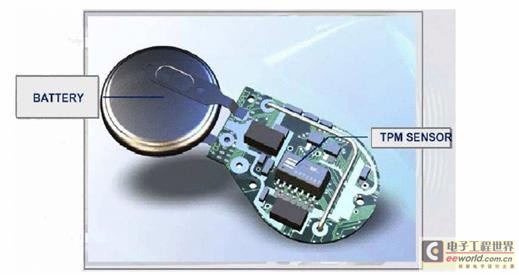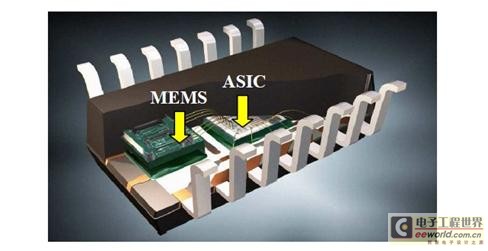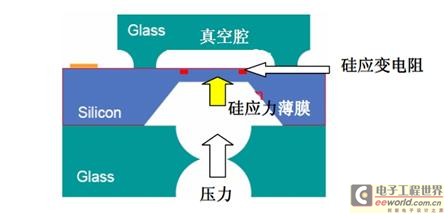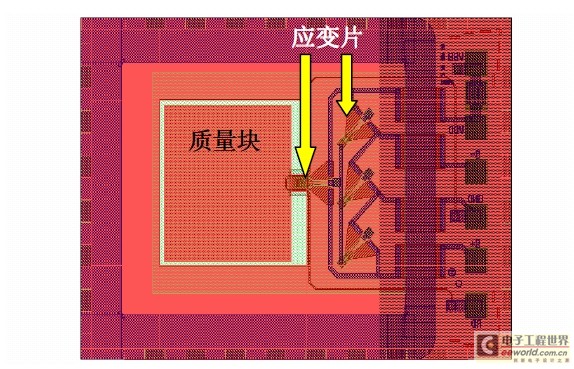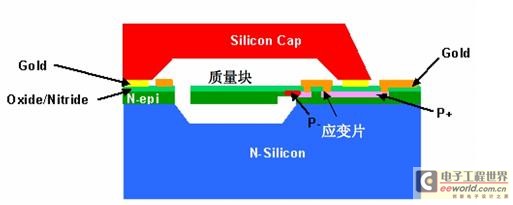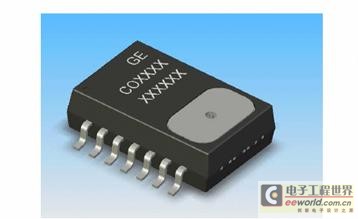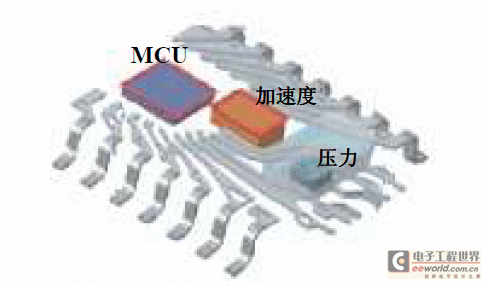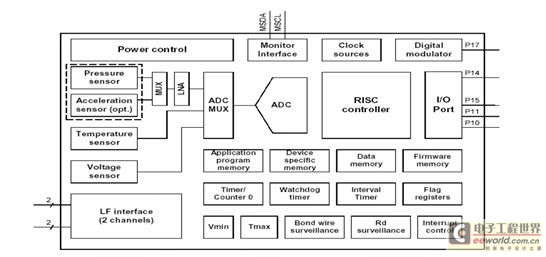TPMS is the abbreviation of "TIre Pressure Monitoring System" of automobile tire pressure monitoring system. It is mainly used for real-time automatic monitoring of tire pressure when the car is running, and alarming of tire leakage and low air pressure to ensure driving safety. Early warning system for life safety of passengers and passengers. Figure 1 TPMS transmitter consists of five parts Figure 2 The physical picture of the finished product of the TPMS tire pressure monitoring module The smart sensor is a pressure sensor, acceleration sensor chip integrated with silicon micromachining (MEMS) technology, and a temperature sensor, battery voltage detection, internal clock and analog-to-digital converter (ADC), and sample / hold (S / H) ), SPI port, sensor data calibration, data management, ID code and other functions of digital signal processing ASIC chip. With mask programmability, it can be configured using customer-specific software. It consists of several chips of MEMS sensor and ASIC circuit, which are made in a package with integrated circuit technology (Figure 3). A pressure / temperature introduction hole is left above the package (Figure 4), and the pressure is directly introduced on the stress film of the pressure sensor (Figure 5), and this hole also directly introduces the ambient temperature into the semiconductor temperature sensor. The MEMS silicon piezoresistive pressure sensor adopts the inner wall of a circular stress silicon thin film fixed on the periphery, and directly engraves four high-precision semiconductor strain gauges on its surface stress using MEMS technology to form a Wheatstone measuring bridge as a power When the measuring circuit is changed, the physical quantity of pressure is directly converted into electric quantity, and its measurement accuracy can reach 0.01-0.03% FS. The structure of the silicon piezoresistive pressure sensor is shown in Figure 5. The upper and lower layers are made of glass, and the middle is a silicon chip. There is a vacuum cavity on the top of the stress silicon film, making it a typical absolute pressure sensor. In order to facilitate the identification of the TPMS receiver, each pressure sensor has a unique 32-bit ID code, which can generate 400 million unique numbers. Figure 3 Pressure, acceleration and ASIC / MCU combination package in one package Figure 4 Pressure / temperature inlet Figure 5 Silicon piezoresistive pressure sensor structure Figure 6 Plane structure diagram of acceleration sensor Figure 7 Acceleration sensor cross-sectional structure diagram Similarly, the acceleration sensor is also made by MEMS technology, Figure 6 is the MEMS acceleration sensor plane structure diagram, Figure 7 is the acceleration sensor cross-sectional structure diagram, the middle of the figure is a piece made of MEMS technology, which can follow the movement The silicon island mass that can swing freely up and down is engraved with a strain gauge on the silicon beam connected to the surrounding fixed silicon, and constitutes a Wheatstone measurement with three other strain gauges carved on the fixed silicon. In the electric bridge, as long as the mass swings with the acceleration force, the balance of the Wheatstone measuring bridge is destroyed, and the Wheatstone measuring bridge outputs a voltage â–³ V that changes linearly with the force. The pressure sensor, acceleration sensor, and ASIC / MCU are three separate bare chips. They are integrated into a packaged unit by the chip integrator, as shown in Figure 8. GE Corporation NPX2 in the United States, and Figure 9 are clear after removing the packaging material. Seeing these three bare chips, the connection and matching between the three chips are also done. Figure 8 NPX2 of American GE Company Figure 9 is after removing the packaging material The acceleration sensor can make the transmitter module have an automatic wake-up function. The intelligent sensors of the SP12 / 30 and NPX2 series include an acceleration sensor. The acceleration sensor uses its mass sensitivity to motion to realize the instant start of the car movement, enter the system self-test, automatic Wake up, according to the speed of the car when driving at high speed Automatically determine the detection time period intelligently, and use software to set the safety period, sensitive period and dangerous period to gradually shorten the tour detection period and improve the early warning ability and save energy. You can use the acceleration sensor + MCU + software design to complete the wake-up function setting, no longer need to use other chips, so as not to increase costs. Figure 10 SP30 P2SC integrated with PHILPS Figure 11 NPX2 P2SC integrated with PHILPS The smart sensor module also integrates ASIC / MCU. Both NPX2 and SP30 are ASIC chips using PHILPS P2SC sensor signal conditioning (Figure 10 and Figure 11). This unit can be clearly seen in the electrical schematic of NPX2. Including an 8-bit RISC microcontroller for arithmetic processing control, 4K EROM or FLASH for setting the system firmware, 4K ROM for storing customer application programs, 128Byte EEPROM for storing sensor calibration parameters and user-defined data, RAM , Timing modulator, interrupt controller, RC oscillator, and low-noise amplifier LNA that amplifies the signal from the sensor, and then the ADC that converts the sensor signal into a digital signal, the I / O port that communicates with the outside world, power management and viewing Watchdog, intermittent timer, 1-3 dimensional LF interface. Figure 12 TPMS sensor module technology development trend The development trend of TPMS sensor module technology is to develop the transmission module to a highly integrated, singular, and wireless passive direction (Figure 12). With the requirements of the TPMS product market for high integration and high reliability of ICs, there are already smart sensor modules such as Infineon SP12 / SP30 and GE NPX that combine the sensors required to test each physical quantity and the MCU into one. In the next few years, a three-in-one module including an RF transmission chip will be developed, including a four-in-one module that uses self-powered mechanical energy. At that time, the tire pressure monitoring transmitter will consist of only one module and one antenna. The secondary design becomes very simple. Our company is specialized in supplying Hvac Compressors. A compressor is a mechanical device that increases the pressure of a gas by reducing its volume which is the most important part of a HVAC system.It includes household air conditioner compressors, automobile air conditioner compressors,Refrigerator Compressor, cold room compressor,commercial compressor etc. We could provide you compressor both from those famous brand and OEM factory. We promise our customer a good quality and well organized after-sales service to let our customer have faith in us. Hvac Compressors Hvac Compressors,Rotary Screw Compressor,Refrigerator Compressor,Fridge Compressor ZHEJIANG ICE LOONG ENVIRONMENTAL SCI-TECH CO.,LTD. , https://www.ice-loong.com
In developed countries such as Europe and the United States, TPMS is already a standard product for automobiles. Therefore, TPMS is growing rapidly in terms of product variety and production output. The technology development of MEMS chips and IC chips used by TPMS is progressing rapidly. The final product technology of TPMS is also Therefore, it has developed rapidly.
The tire pressure monitoring module of TPMS is composed of five parts: (1) a smart sensor SoC with a combination of pressure, temperature, acceleration, voltage detection and post-signal processing ASIC chip; (2) 4-8 bit microcontroller (MCU); (3 ) RF radio frequency transmitter chip; (4) lithium sub-battery; (5) antenna. See Figure 1, Figure 2 is the physical picture of the finished product. The shell is made of high-strength ABS plastic. All devices and materials must meet the automotive temperature range of -40 ℃ to + 125 ℃. 
